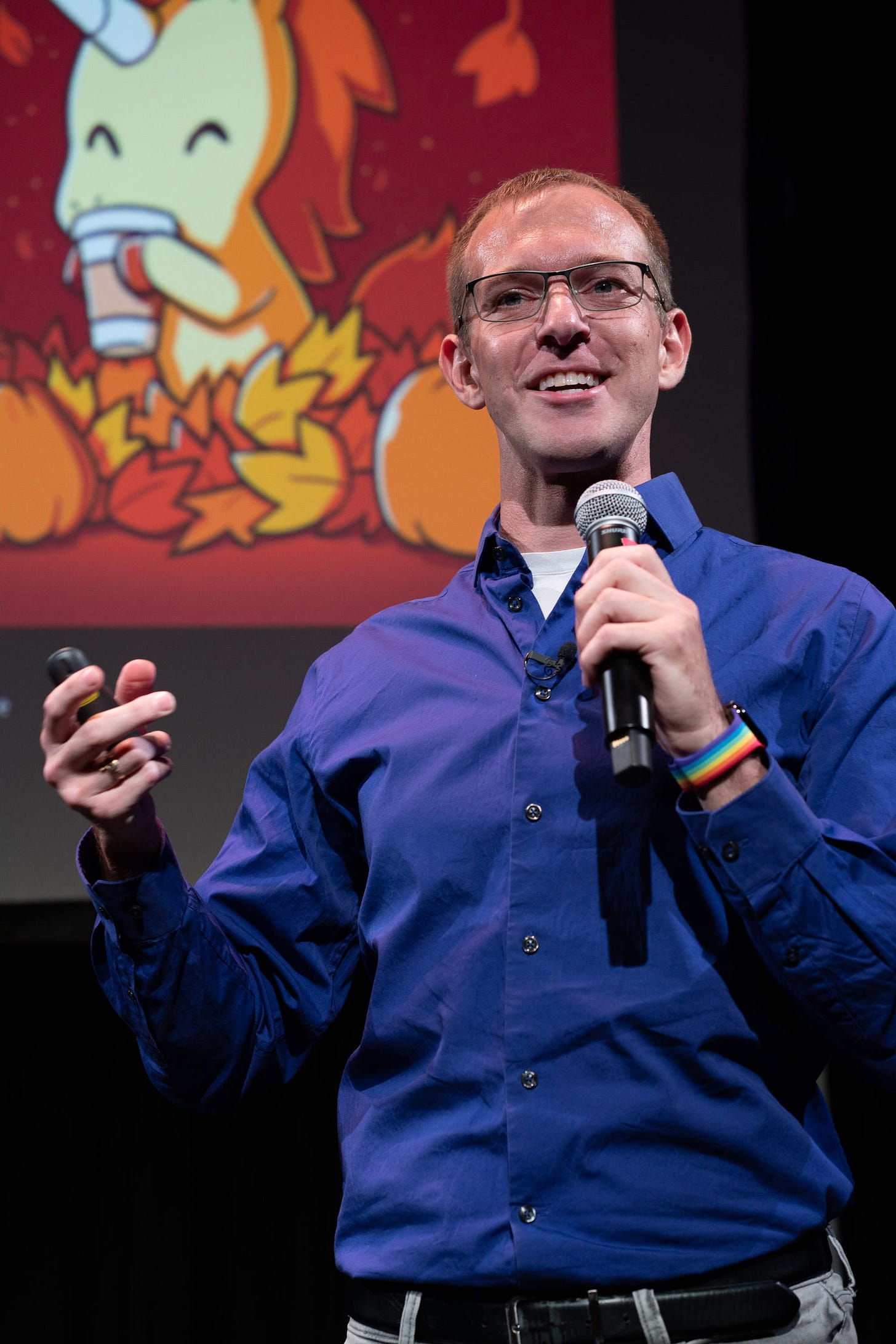Welcome to Linguistic Discovery!
Hi! 👋 Linguistic Discovery is all about the science and diversity of language—a field known as linguistics. 🗣️
The purpose of this newsletter is simple: to teach you how language works, and why language is the way it is.
Each week you’ll receive a weekly digest of the latest language-related news and research, interesting reads from the week, and new books and media, along with commentary from me, Daniel W. Hieber, Ph.D. in linguistics.
In addition, you’ll get biweekly longform articles exploring the diversity of the world’s languages, how language works, language profiles, explainers of concepts in linguistics, reviews, and more. Most posts will be free, with the occasional subscriber-only post.
Explore the newsletter archive here!
👋 About Me
I, Danny Hieber, Ph.D., am a research linguist who works to document and revitalize endangered languages, while studying the patterns we see across the world’s languages and why they happen—a field known as linguistic typology. I received my Ph.D. from the University of California, Santa Barbara, and my B.A. from The College of William & Mary. Check out my academic page here.
I work primarily with the Chitimacha Tribe of Louisiana to help them revitalize their once-dormant language. We are using archival materials to produce a modern dictionary and grammatical description of the language.
📰 About the Newsletter
This newsletter focuses on how language works and why it is the way it is. That makes this newsletter (and all my social media channels) a little different from other science communicators in linguistics. It’s fun to know that all languages are sensitive to animacy in some way or other, with languages like Navajo even going so far as to have a complex animacy hierarchy that determines the order of nouns in a sentence:
humans/lightning → infants/big animals → midsize animals → small animals → insects → natural forces → inanimate objects/plants → abstractions
But it’s a whole ’nother level of understanding to realize that the animacy hierarchy is a reflection of a basic principle of human cognition: theory of mind, the ability to ascribe mental states and intentions to other people. The actions of other human beings are more salient to us than animals or inanimate objects. And that animacy bias surfaces in subtle ways in language after language after language.
This newsletter sets out to give you a deeper understanding of how language works, and the forces that make language the way it is.
💡 My particular perspective on language is what’s known in the field of linguistics as functionalism or usage-based linguistics, the idea that language is shaped by shaped both by how we use it and general features of human cognition. The core tenet of functionalism is that form follows function. Language changes to fit the uses we put it towards. So the explanations I give in this newsletter will often involve aspects of human cognition, frequency, and social factors.
A secondary goal of Linguistic Discovery is to showcase the vast and beautiful diversity of the world’s languages. There are over 7,000 languages used in the world today, most of which are unknown to the general public. Sadly, a huge proportion of these languages are endangered (44% according to the Ethnologue).

This is not only a cultural tragedy, but a scientific one as well. Small, indigenous languages often have some of the most unique features, and yet are typically the least well known or documented.
For example, did you know that in some languages the equivalent of English nouns or verbs can be suffixes? Check out the examples below, from a language called Nuuchahnulth (autonym: Nuučaan̓uł /nuːt͡ʃaːnˀuɬ/), spoken in the Pacific Northwest, which is highly endangered.
ʔaƛc̓iq
ʔaƛ‑c̓iq
two‑canoes
‘there were two canoes’
Louie (2003: GL 099)ʔaƛakʷaɬtaqimɬ ʕuy̓i
ʔaƛakʷaɬ‑taqimɬ ʕuy̓i
eight‑bundle medicine
‘eight bundles of medicine’
Louie (2003: GL 005)
muutyiiqcukʷit
muːt‑yiːq‑cuk‑it
boat‑traveling.on‑needing.to‑past
‘we needed to take a boat’
Nakayama (2001: 19)
č̓aapaciiɬw̓it̓as
č̓apac‑iːɬ‑w̓it̓as
canoe‑make‑about.to
‘he is going to build a canoe’
Louie (2003: GL 004)
As of 2021, there are only approximately 635 people who can speak Nuuchahnulth. In fact, all the languages of the Wakashan language family of which Nuuchahnulth is a part are endangered, as is the neighboring Salishan language family. Yet it is precisely these languages of the Pacific Northwest that have this fascinating feature of lexical suffixes, and when they were first documented they fundamentally challenged the distinction between nouns and verbs in language. Imagine how many other linguistic possibilities are hidden in in the world’s undocumented languages—or have already been lost.
So whenever possible I put indigenous and minority languages front and center. I also talk about contact languages (pidgins, creoles, and mixed languages) and sign languages, since these too are minority languages that have been misunderstood and ostracized throughout history.
📰 The Newsletter
Here are the types of articles you can expect to see in this newsletter:
current linguistics: A weekly roundup of interesting news, research, articles, and media from the week.
functional principles: Explanations of processes or principles that shape language. Examples:
where grammatical words come from (grammaticalization)
how we use prototypes to understand the meanings of words
language profiles: Deep-dives about individual languages or language families and what makes them unique.
crosslinguistic patterns: Surveys of all the ways different languages can communicate the same idea or accomplish a certain function. Examples:
how languages talk about the future
how many different types of plurals a language can have
explainers: Explanations of concepts in linguistics with lots of examples from various languages. Examples:
what is a morpheme? / what is morphology?
what is grammatical case?
what is metathesis?
other original topics: Deep-dives on random interesting topics! Examples:
book/media reviews: My take on books and other media about language and linguistics. Examples:
Because the whole point of Linguistic Discovery is to educate the world about the science and diversity of language, the majority of the articles in this newsletter are free. (What good is writing a great explanation about something if nobody can access it?) But if you’d like to support me in educating the world about linguistics, I’ve thrown in some perks for supporters as well:
➕ bonus articles/videos
👀 early access to chapters of my book
🤗 my heartfelt thanks and appreciation for helping me educate people about the science and diversity of language!
Price: $5/mo. (USD)
But if you’re just here for all the awesome free content, that’s great too! I’m super excited to have you here!
Thank you for checking out the newsletter! I hope each issue sparks a sense of awe and fascination with language for you, just like linguistics has for me.
Stay up-to-date
Never miss an update—every new post is sent directly to your email inbox. For a spam-free, ad-free reading experience, plus audio and community features, get the Substack app.
📚 References
Louie, George. 2003. George Louie’s Nuu-chah-nulth (Ahousaht) texts with grammatical analysis (Endangered Languages of the Pacific Rim A2-028). (Ed.) Toshihide Nakayama. Nakanishi Press.
Nakayama, Toshihide. 2001. Nuuchahnulth (Nootka) morphosyntax (University of California Publications in Linguistics 134). University of California Press. (Amazon | Bookshop.org)
The Amazon links and Bookshop.org in this newsletter are affiliate links, which means that I earn a small commission from those companies for purchases made through them (at no extra cost to you).
If you’d like to support Linguistic Discovery, purchasing through these links is a great way to do so! I greatly appreciate your support!
Check out my entire Amazon storefront here.





